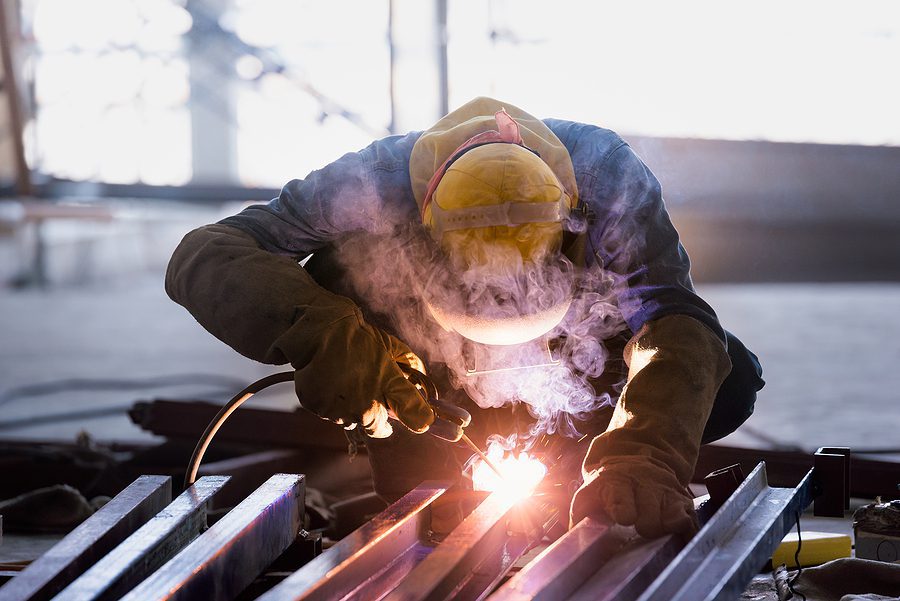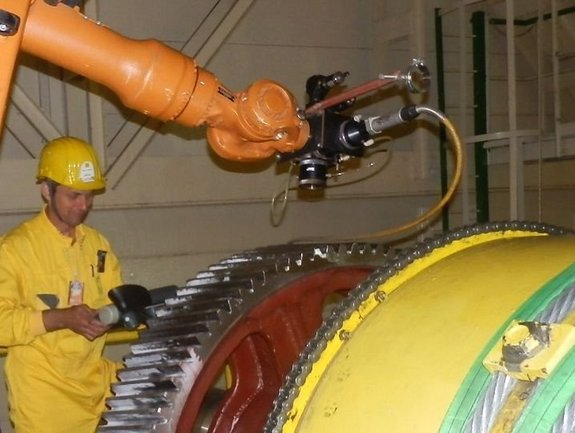Common Welding Repair Service Issues and How to Address Them Efficiently
Welding repairs usually encounter a variety of issues that can endanger the stability of the end product. Usual issues consist of poor penetration, porosity, and imbalance, among others. Each flaw presents distinct difficulties that need specific strategies for resolution. Understanding these issues is crucial for welders intending to boost their skills and results. This discussion will certainly explore these common welding repair issues and reliable methods to resolve them.
Inadequate Penetration
Insufficient infiltration takes place when the weld steel falls short to completely fuse with the base product, causing weak joints and possible architectural failings. This concern often stems from insufficient heat input, incorrect electrode angle, or improper welding rate. Welders may come across poor infiltration as a result of a miscalculation of the essential parameters for a particular product density or type. In addition, contamination on the base material's surface area can impede effective bonding, aggravating the problem. To attend to insufficient penetration, welders need to guarantee suitable settings on their equipment and keep a clean work surface area. Normal assessment of welds is recommended to recognize any kind of deficiencies early, enabling timely adjustments and the prevention of jeopardized structural integrity in welded assemblies.
Porosity
Porosity is a common flaw in bonded joints that manifests as tiny gas bubbles caught within the weld metal. This defect can compromise the honesty of the weld, resulting in lowered toughness and prospective failure under stress. Belgrade. Porosity typically arises from contamination, dampness, or inappropriate welding methods, which enable gases to leave right into the liquified weld pool. To attend to porosity, welders need to ensure correct surface area preparation, preserve a tidy functioning environment, and make use of appropriate welding criteria. Furthermore, picking the best filler material and securing gas can alleviate gas entrapment. Normal examination and screening of welds can aid identify porosity early, guaranteeing timely restorative actions are taken, consequently protecting the high quality and reliability of the bonded framework
Misalignment
Misalignment in welding can occur from different factors, including incorrect setup and thermal expansion. Recognizing the origin is essential for reliable resolution. Several adjustment methods are available to straighten components and assure architectural stability.
Reasons for Misalignment
Welding imbalance commonly originates from a range of underlying concerns that can compromise structural integrity. One key cause is incorrect fit-up of elements prior to welding, which can result in voids and uneven surface areas. Variants in thermal growth throughout the welding process can additionally result in distortion, especially if the materials being joined have different coefficients of expansion. In addition, poor fixturing and securing might stop working to hold parts safely in position, bring about activity during welding. Improperly conserved tools, consisting of welding makers and devices, might introduce variances in the weld grain, more adding to misalignment. Operator error, stemming from not enough training or experience, can also play a significant role in producing misaligned welds.

Correction Methods Available
Dealing with misalignment effectively needs a combination of rehabilitative methods tailored to the particular issues handy. One usual technique is the usage of fixtures or jigs to hold parts in the right setting throughout welding, making certain consistent positioning. Additionally, pre-heating the products can assist minimize distortion and enhance fit-up. For considerable misalignment, mechanical adjustment strategies, such as using hydraulic jacks or clamps, can be utilized to correct the placement prior to welding. Post-weld warmth treatment might also be required to alleviate anxieties triggered by misalignment. Ultimately, mindful examination and change during the configuration stage can protect against misalignment problems from ending up being substantial troubles, promoting a smoother welding process and enhancing general structural honesty.
Distortion
Distortion is an usual challenge in welding that can develop from various factors, including unequal cooling and heating. Comprehending the root causes of distortion is important for applying efficient prevention techniques. Addressing this concern not only improves structural integrity however likewise boosts the overall high quality of the weld.
Sources of Distortion
When subjected to the intense warm of welding, materials commonly undertake changes that can lead to distortion. This sensation primarily occurs from thermal growth and contraction during the welding process. As the weld area warms up, the product increases; upon air conditioning, it contracts, which can develop inner anxieties. Furthermore, irregular home heating throughout a workpiece can intensify these stresses, resulting in bending or flexing. The type of product likewise plays a considerable role; steels with differing thermal conductivity and coefficients of expansion may react differently, resulting in uncertain distortions. Poor joint layout and inadequate fixturing can add to misalignment throughout welding, raising the possibility of distortion. Recognizing these causes is vital for effective welding fixing and avoidance techniques.
Prevention Techniques
Reliable prevention techniques for distortion throughout welding focus on regulating warm input and guaranteeing proper joint design. Preserving a constant warm input assists to minimize thermal development and contraction, which can result in distortion. Using techniques such as preheating the work surface can additionally decrease the temperature gradient, promoting consistent home heating. In addition, choosing suitable joint styles, such as T-joints or lap joints, can enhance stability and minimize stress concentrations. Applying proper fixturing to secure the workpieces in area better aids in maintaining placement during the welding procedure. Lastly, staggered welding sequences can disperse warmth much more uniformly, protecting against localized distortion. By using these strategies, welders can considerably lower the possibility of distortion and boost the overall high quality of their welds.
Splitting
Splitting is a common issue come across in welding repairs, often arising from numerous aspects such as inappropriate cooling prices, product selection, or poor joint preparation. The occurrence of fractures can significantly jeopardize the honesty of the weld, resulting in prospective failures throughout procedure. To address this issue, welders must initially assess the root triggers, ensuring that materials are suitable and suitably selected for the certain application. In addition, controlling the air conditioning price throughout the welding process is essential; fast cooling can cause anxiety and result in breaking. Appropriate joint style and prep work also add to reducing the threat. Implementing these methods can improve weld high quality and sturdiness, eventually minimizing the possibility of cracking in ended up weldments.

Incomplete Combination
A significant problem in welding repair work is insufficient blend, which takes place when the weld metal does not properly bond with the base material or previous weld passes - Montana Mobile Welding and Repair Fabrication. This issue can result in weak points in the joint, potentially endangering the stability of the bonded structure. Variables adding to insufficient combination consist of insufficient heat input, improper welding method, my site and contamination of the surfaces being joined. To address this issue properly, welders ought to ensure appropriate pre-weld cleansing and surface prep work, in addition to readjust their welding criteria to attain sufficient infiltration Check This Out and combination. Routine inspection throughout the welding process can additionally help recognize insufficient fusion early, enabling timely corrective procedures to improve the general high quality of the weld
Overheating
While welding repair services can boost architectural honesty, overheating provides a substantial challenge that can result in material destruction. Excessive heat during welding can modify the mechanical homes of steels, resulting in reduced toughness, increased brittleness, and warping. This phenomenon is especially vital in high-stress applications where architectural integrity is paramount. Identifying overheating can entail aesthetic inspections for discoloration or distortion, as well as keeping an eye on temperature during the welding procedure. To minimize the risks linked with overheating, welders ought to use ideal strategies, such as controlling heat input, adjusting travel rate, and using ideal filler materials. In addition, carrying out pre- and post-weld warm treatments can aid bring back material properties and improve the general high quality of the repair service, making sure long-term performance and security.
Frequently Asked Inquiries
What Are the Common Indications of a Welding Issue?

Just How Can I Evaluate My Welds for High quality?
To examine welds for top quality, one can utilize visual assessments, ultrasonic screening, and radiographic approaches. Each strategy guarantees structural integrity, determines flaws, and confirms adherence to defined requirements, eventually improving the integrity of the welded joints.
What Safety Safety Measures Should I Take While Welding?
When welding, one should focus on security by putting on proper individual protective devices, making certain proper air flow, protecting combustible materials away, maintaining a clean work space, and recognizing environments to avoid mishaps and injuries.
Can I Repair a Weld Without Redesigning the Entire Joint?
Fixing portable welder a weld without redesigning the entire joint is feasible, relying on the damage (Belgrade Fabrication). Strategies such as grinding, including filler material, or utilizing a welding process can efficiently resolve particular problems while protecting the surrounding structure
What Equipment Are Vital for Reliable Welding Services?
Crucial tools for reliable welding repair services include a welding maker, cable brush, mill, protective equipment, clamps, and filler products. Each device plays an essential function in ensuring top quality and safety throughout the fixing process. Porosity typically arises from contamination, wetness, or incorrect welding techniques, which permit gases to escape right into the molten weld swimming pool. Poorly maintained tools, consisting of welding machines and devices, may introduce variances in the weld grain, more contributing to misalignment. When subjected to the intense warm of welding, materials typically undertake changes that can lead to distortion. Splitting is a typical concern encountered in welding repair work, typically resulting from different elements such as incorrect air conditioning rates, product option, or insufficient joint prep work. A significant issue in welding repair services is insufficient blend, which takes place when the weld metal does not adequately bond with the base material or previous weld passes.